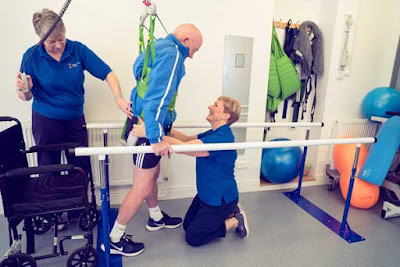Treatments and Procedures Physiatrists Perform

Especially in the inpatient setting, physiatrists provide general medical treatment like internal medicine to maintain medical stability and provide secondary prevention of disability. Physiatrists do not do operation yet have many procedural opportunities for diagnosis and treatment. Many of these procedures may require fellowship or innovative training to perform. These PM&R treatment procedures include: EMG (electromyography) : Introducing fine needle electrodes in muscles and observing the noted motor unit potentials when the muscles are activated to help distinguish whether weakness is due to muscle or nerve dysfunction (i.e., myopathy vs. neuropathy). NCS (nerve conduction studies) : Usage of electrodes to record motor and sensory responses that are propagated by electrical stimuli. This treatment can help distinguish the location of a nervous system lesion (radiculopathy, peripheral neuropathy, motor neuron disease, or neuromuscular junction). Peripheral jo


